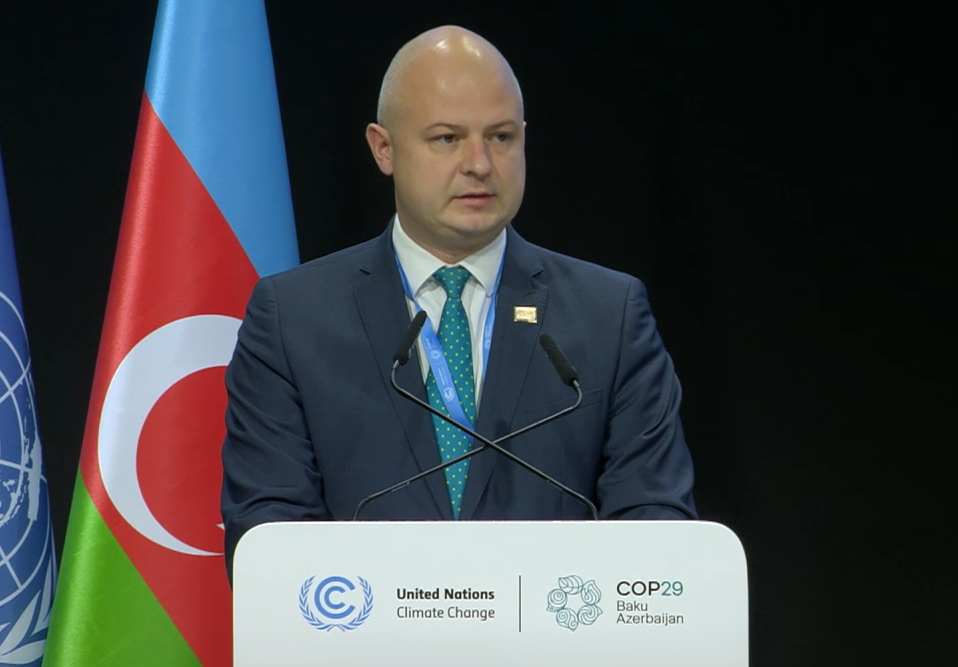BAKU, Azerbaijan, November 20. By 2030, Lithuania's national electricity grid will turn green, with the share of electricity from renewable energy sources reaching 100%, said the country's Minister of Environment Simonas Gentvilas as he addressed the COP29 summit in Baku, Trend reports.
"Our meeting represents another opportunity to act," Gentvilas began, stressing the need for immediate action. He highlighted the importance of transitioning away from fossil fuels and set a bold target of tripling global renewable energy capacity and doubling energy-saving efforts by 2030, a commitment made last year in Dubai. However, Gentvilas noted that the initial program assessment revealed that global efforts were not sufficient. "Unfortunately, the first program assessment shows that our collective efforts were not enough. We can and must do better," he stated.
Lithuania has already made significant strides in its green transition. The country has committed to reducing greenhouse gas emissions by at least 70% by 2030 compared to 1990 levels, with a long-term goal of achieving climate neutrality by 2050. He also pointed out that Lithuania's solar and wind power capacity has quadrupled since 2020 and is expected to more than double by 2026. Additionally, the country aims to achieve 100% renewable energy in its heating sector by 2050.
Looking to the international stage, Gentvilas called for an ambitious and balanced outcome at COP29. "Today, Lithuania calls for ambitious and balanced outcomes here in Baku," he said, urging the global community to implement the global stocktake decision and enhance mitigation ambitions in line with the 1.5°C temperature goal.
He also addressed the critical issue of climate finance, emphasizing the need for a realistic and ambitious global target. "We must move towards long-term resilience and reach a new agreement on a new collective quantified goal on climate finance," Gentvilas said. He stressed that the quantum of this goal should reflect the evolving economic capabilities of countries, taking into account not only historical emissions but also the growing contribution of current emissions.







